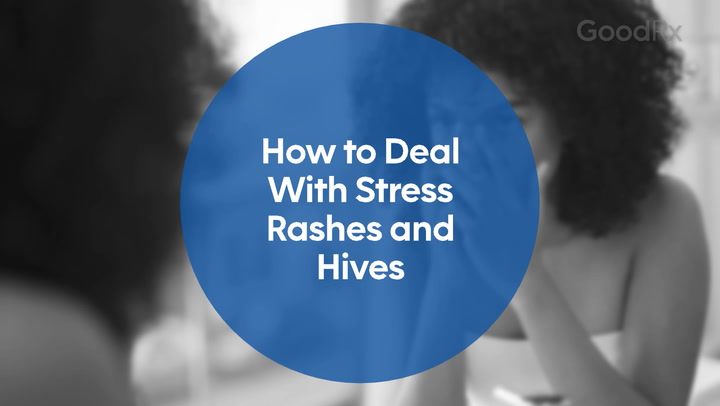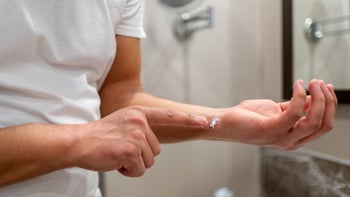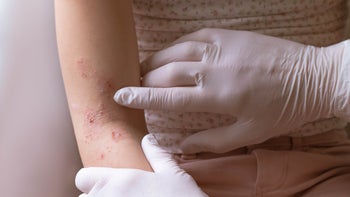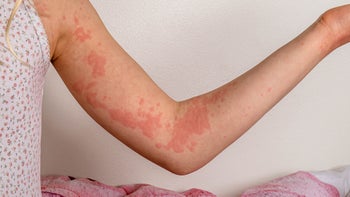
Breaking Out in Hives? 7 Surprising Triggers
Key takeaways:
Hives are raised, itchy patches on your skin that are often caused by an allergic reaction, but not always.
Surprising triggers include heat, pressure, sweat, mood, and infections, among other health conditions.
Hives usually go away on their own quickly — sometimes within an hour — but talk to a healthcare professional if they don’t or if they’re severe.
Table of contents

When most people think of hives, they often assume they’re caused by an allergic reaction to something like food. And it’s true that allergies are a common cause of hives, which appear as a bumpy, itchy, raised rash.
But hives can be triggered by many different things, from the weather to stress.
Here’s how to figure out what’s causing your hives and when to talk to your healthcare professional.
Search and compare options
What are the symptoms of hives?
Hives, also known as urticaria, can show up differently from person to person. But they’re usually raised patches of skin that are itchy. They can be red, violet, or skin colored, depending on your skin tone. If they’re red and you press down on the center, they can become white (something known as blanching).
Hives can look like bug bites. But they can change appearance more quickly. For example, they can move around on your body — or go away and then come back quickly. They can stay separate. Or they can spread and join up with each other, creating a much bigger area of hives.
Here are some pictures of hives to see what they look like.


Chronic hives: If you tend to get hives a lot, look for causes of chronic hives.
Anxiety: Emotional stress and anxiety may be causing your hives.
Kids and hives: Children are more likely to develop hives from viruses and food.
What can cause hives?
Many bouts of hives are an allergic reaction to foods like:
Peanuts
Tree nuts (almonds)
Eggs
Shellfish
They can also be caused by reactions to other allergens like cat dander.
But there are other more surprising triggers you should know about. Figuring out what’s causing your hives can help you avoid exposure to those things in the future — and avoid getting hives again. It can also ease your stress about why you’re suddenly breaking out in hives.
1. Stress and anxiety
Stress is associated with a number of physical symptoms, including hives. Stress can lead your body to release something known as histamine, which is what brings on hives. Having anxiety can also make you feel hot and raise your body temperature, which can indirectly lead to hives as well.
2. Extreme weather: Heat, cold, and sun
If your body goes from being too cold to warm again — like going from cold water and into the sun — you can get hives.
You can also get hives if your skin is exposed in cold weather or you’re out in the sun (even if you don’t get super hot).
3. Exercise
If you work out in the sun on a hot day, all that sweating and higher body temperature can cause hives. Keep in mind that this could be the sign of something more serious, known as exercise-induced anaphylaxis. So, if you get hives from exercise, talk to your healthcare professional.
4. Everyday viruses
Having an infection can trigger hives, such as from a cold, upper respiratory tract infection, or COVID-19. The hives can sometimes appear a week after you start feeling sick. They usually last for about 1 to 2 weeks and then slowly fade away. Viruses are actually one of the most common causes of acute hives in children (hives that come and go quickly).
5. Autoimmune diseases
In some people with autoimmune conditions, the immune system ends up attacking the body and causing hives. This can happen to people with conditions like:
Thyroid disease
Vitiligo
Lupus
Celiac disease
Type 1 diabetes
Rheumatoid arthritis
6. Physical pressure
Pressure on a body part can cause hives. This can happen from wearing too-tight clothing for a longer period of time. This could happen around your stomach if you have a belt squeezing you. Or hives can appear on the soles of your feet if you walk a long distance. Another similar cause of hives: holding something, like a car’s steering wheel.
Rubbing or scratching a section of skin can cause hives to quickly develop there too. For example, an itchy sweater rubbing back and forth on your torso. Or running your fingernail over your skin.
You can also develop what’s called dermatographia, where the welt takes the shape of any pressure applied to your skin. The good news: These kinds of hives tend to be pretty short-lived, going away within an hour.
7. Tattoos
There are a few ways a tattoo can cause hives. You might end up being allergic to dye in the ink used. This is usually a mild reaction in the tattoo. But a more serious reaction can cause hives in other parts of the body.
The tattoo ink may also cause your skin to become allergic to the sun, causing hives over the tattoo when you go outside.
How can I treat hives?
Hives, especially mild cases, usually just go away on their own. You can take an over-the-counter (OTC) antihistamine to help reduce their itchiness. There are several non-drowsy types, like:
Cetirizine (Zyrtec)
Fexofenadine (Allegra)
If you’re heading to bed, it may be better to choose one that can make you sleepy:
Diphenhydramine (Benadryl)
When should you contact your doctor about hives
If your hives break out over a large part of your body, don’t go away, or feel incredibly uncomfortable, you should reach out to a healthcare professional. You may need to get allergy testing to see what’s triggering the hives.
Some symptoms could be a sign of a life-threatening reaction, called anaphylaxis. Call 911 if you have any of the following symptoms:
You’re having trouble breathing.
You feel like your mouth or throat is closing up.
Your tongue, lips, or face is swollen.
You have voice changes.
The hives are on your face or neck.
You have stomach pain, nausea, or vomiting.
The bottom line
Hives can often be caused by an allergic reaction to things like foods or pet dander. But there are also more surprising triggers. Some external factors can cause hives, like extreme weather, too much pressure or rubbing on skin, and getting too sweaty or hot. Internal triggers can also be to blame, such as a recent infection, stress, or autoimmune diseases. Whatever the cause, if your hives don’t go away on their own or are severe, call your healthcare professional to see what’s going on.
Why trust our experts?



Images used with permission from VisualDx (www.visualdx.com)
References
American Academy of Allergy, Asthma, & Immunology. (2023). Hives (Urticaria) and Angioedema Overview.
American Academy of Dermatology Association. (n.d.). Tattoos: 7 unexpected skin reactions and what to do about them.
American Academy of Dermatology Association. (2021). Hives: Causes.
American Academy of Dermatology Association. (2021). Hives: Overview.
American College of Allergy, Asthma, & Immunology. (2018). Hives.
Fraser, K., et al. (2013). Chronic urticaria and autoimmunity. SkinTherapyLetter.
McSweeney, S. M., et al. (2023). Physical urticaria: Clinical features, pathogenesis, diagnostic work-up, and management. Journal of the American Academy of Dermatology.

















